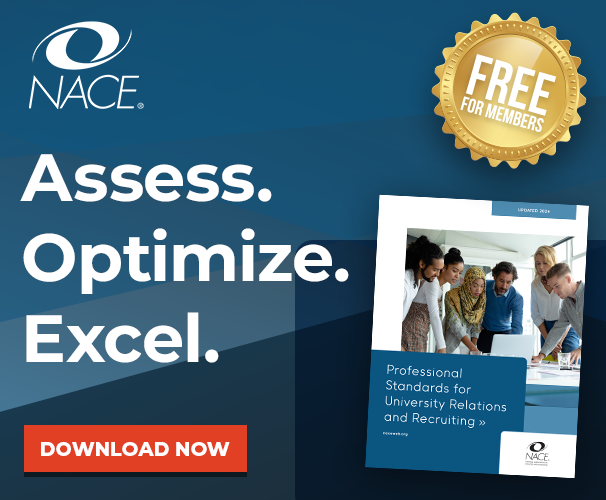Spotlight for Recruiting Professionals
Based on his experience and research, Joshua Fredenburg, Ed.D., says the biggest obstacle for employers to overcome to effectively recruit and retain culturally diverse candidates and hires comes down to one thing.
“I would sum it up in one word: change,” explains Dr. Fredenburg, president of the Circle of Change Leadership Conference and author of R.E.D. Leadership.
“However, there are different levels of change. The first is leadership. To make impactful change, leadership will have to alter some of the organization’s practices. This includes creating more diversity at the C-suite level, which is critically important.”
He continues that the second level of change comes within the organization itself. This may involve restructuring the organization, its work habits, and its systems—such as the ways it supports culturally diverse employees—to make it conducive to diverse cultures and backgrounds.
“Another level where change can occur is in recruitment strategy,” Dr. Fredenburg says, adding that an organization that, for example, wants to hire more Black employees might develop deeper relationships with HBCUs.
“Niche markets—such as community colleges and trade schools—can also be part of this, but organizations have to be open to finding these new sources of and approaches to recruiting.”
However, he notes, cultural intelligence may be the most important individual area of change for organizations that want to bolster their recruitment and retention of culturally diverse individuals. Dr. Fredenburg explains that “cultural intelligence is the ability not only to respect and value people who are different from you, but to be a curious learner and active listener to develop an understanding and make the adjustments that are necessary to recruit and retain people from diverse cultures and backgrounds.”
He stresses that to maximize results, all of this change has to come into play.
“When organizations address all of these issues—and they’re all very big—it helps them recruit and retain diverse talent, and it helps that talent thrive, succeed, and be productive,” Dr. Fredenburg points out.
“It’s a big overarching challenge, but it can be done piece by piece. The change that results will be beneficial for all.”
Of course, there are other elements and practices of organizations that are successful in recruiting and retaining culturally diverse employees. For example, it is important for employees and recruits to see leadership that is representative of the diversity the organization says it wants to achieve.
“In my work, I consistently hear students say that the fact they can see someone who looks like them and can relate to them in a leadership role is inspiring and lets them know they can accomplish higher goals there,” Dr. Fredenburg says.
“That ability for these leaders to relate and share their stories and to be where that person was is powerful inspiration.”
He adds that providing opportunities for professional development is also a key component of successful recruiting and retention efforts of diverse candidates and employees.
“I did a study of more than 600 culturally diverse Millennials and Gen Zs, and professional development with the opportunity to become leaders was the number one thing they seek in an organization,” Dr. Fredenburg says.
“To recruit and retain, not only do organizations have to have people who look like the recruits they’re seeking, but they also have to provide opportunities to grow into greater leadership positions. Companies should not just focus on hiring diverse candidates for jobs, but they should do so with an emphasis on developing them into leaders.”
Some organizations will develop career strategies or career maps for their recruits and new hires that determines a plan for advancement within the organization. Doing so, Dr. Fredenburg says, is a strong indication that the organization cares about its employees’ development.
Organizations that don’t develop the policies, practices, and programs necessary to attract diverse candidates and then retain them once they are hired run the risk of having disengaged employees who aren’t motivated and produce below their capacity. This can lead to high turnover and a bad reputation within its industry and the job market.
“That is a bad place to be and once an organization is there, it is very difficult for it to recover,” Dr. Fredenburg notes.
On the other hand, there are benefits for organizations that effectively attract and develop diverse employees.
“If culturally diverse candidates are attracted to a company and are supported and developed after being hired, retention and production will be strong,” he says.
“Employees will be motivated, engaged, and passionate about their work, which is an important element. This level of positivity will carry over into recruiting as there will become momentum around the organization as a place diverse candidates want to work and stay. Recruitment is no longer a sales pitch for the organization; it’s simply who the organization is and that comes through.”
Dr. Fredenburg recommends that organizations strengthen their recruitment and retention of culturally diverse candidates by:
- Having culturally intelligent leaders—These leaders never stop learning about other cultures and making the adjustments that are necessary to recruit, support, develop, and retain people from diverse cultures and backgrounds.
- Developing an inclusive winning culture—An organization can be diverse, but if its culture is toxic, it will not succeed in retaining diverse employees. It’s important to have the right culture—one that’s inclusive and conducive for everyone—before focusing on bringing in diverse candidates.
- Making professional development a standard practice—The organization should ensure it has a strong program of employee training and leadership development. Effective training should supplement lecture-style training with experiential training, so employees are trained, get coached, and can practice what they learn, which leads to more impactful development.
- Using metrics—The organization should measure its outcomes to see if its efforts are working. It is important to get quantitative data to see the numbers and outcomes, but organizations that recruit, develop, and retain diverse candidates effectively also want to determine, for example, if employees feel they belong, if they feel supported, and if they feel the company can do better in any areas.
“If diverse candidates see authenticity and integrity and an organization that cares about its employees through support and professional development,” Dr. Fredenburg adds, “they not only want to be a part of it, they will want to stay a part of it.”



